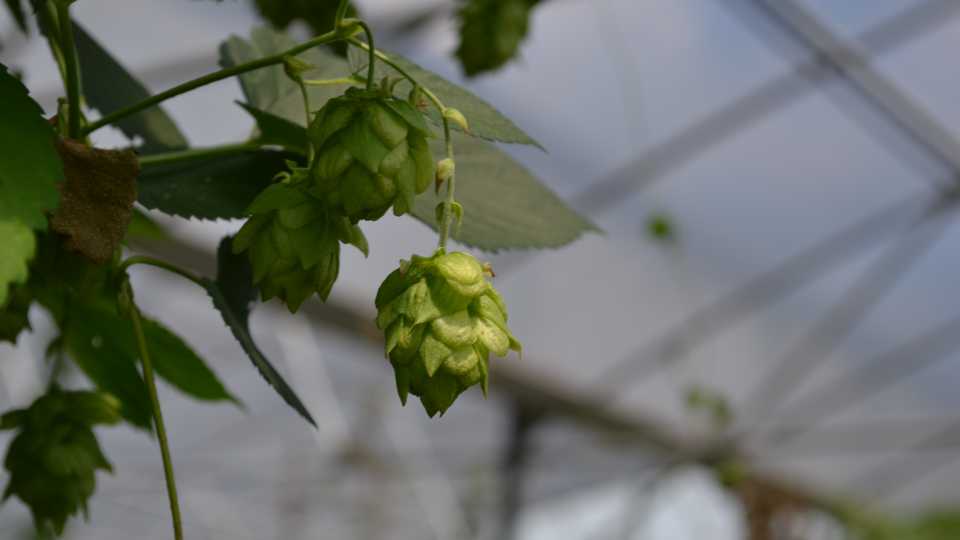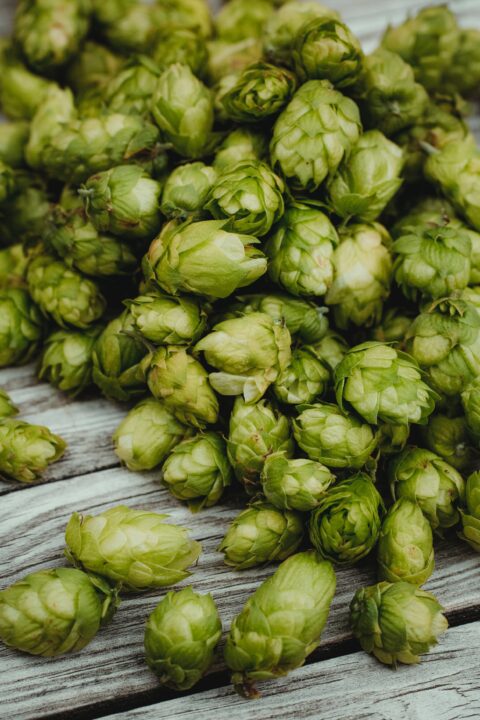Got Hops? Florida Growers Hope To Help Float Local Craft Beer Industry

Can Florida-grown hops ever compete with large-scale operations in the Pacific Northwest? UF/IFAS researchers are gaining ground and trying to show value to local craft beer brewers. Photo by Paul Rusnak
The quest to grow hops commercially in Florida is aging like a fine wine (pun intended). For the better part of a decade now, University of Florida scientists have been trialing different varieties, production strategies, harvesting techniques, and more. The efforts to match the once burgeoning — and still growing strong — craft beer scene in the Sunshine State are paying off.
The latest advancements in hops production were center stage at a recent hops field day. Roughly 50 local craft beer brewers attended the event held at the UF/IFAS Gulf Coast Research and Education Center (GCREC) near Tampa. The main purpose of the Fall Hops Field Day was to show brewers the value and viability of locally-grown hops.
According to UF/IFAS, the Tampa Bay region alone has more than 100 of the state’s nearly 400 brewers. Demand for truly local brews continues to grow.
“The most attractive quality about the UF hops is that they are grown locally, something I make sure to tell customers,” said Zac Collins of Grand Central Brewhouse in St. Petersburg during the event. “It’s a terrific selling point.”
To that end, Collins used ‘Cascade’ hops from UF/IFAS to make a pale ale for the brewery’s second anniversary.
Florida’s subtropical environment and shorter daylength are not the most ideal conditions to grow hops. The Pacific Northwest and its temperate nature is the epicenter of the nation’s hop production. Stiff competition aside, UF/IFAS researchers are still finding ways to keep Florida in the hops game.
In fact. DYK? The hops plot at the GCREC is the only place in the country that harvests hops twice a year — spring and fall. LED lighting technology is a huge key in that distinction. Lack of daylight hours (compared to the PNW) puts Florida hops at a disadvantage. The artificial lighting helps solve that problem, says Shinsuke Agehara, a UF/IFAS Associate Professor of horticultural sciences.
“Florida growers may be able to produce a higher yield than the Pacific Northwest if we can tailor the LED lighting and other horticultural practices according to plant growth habits and requirements in each season,” he says.
In addition to LED lighting, Agehara is seeking ways to maximize the productivity of hops in Florida’s hot and humid climate. Those endeavors are coming to fruition. In one year, his program reportedly recorded 1,600 pounds of hops per acre, which is almost the same yield as in the PNW.
Other research objectives are looking at environmental factors and farming practices that will contribute to the unique flavor qualities of Florida hops — often referred to as “terroir” in wine. The distinctive aromas and flavors found in Florida-grown hops make them stand out from others. Each batch more novel than the next. These special characteristics add to the value of growing hops in a different environment.
“Moving forward, we hope to get more brewers to make beer using Florida-grown hops and get more consumers to try them,” Agehara adds. “If we can increase consumer demand for Florida beer brewed with locally grown hops, that will be win-win for everyone, including growers, brewers, and consumers.”








